Policy Linking
National learning assessments are not comparable across countries due to differences in curriculum objectives, coverage of constructs and sub-constructs, assessment frameworks, and items used.
The Policy Linking methodology is a non-statistical method that uses judgment to align and match items from the national assessment with the Global Proficiency Framework (GPF). This process establishes the internationally comparable global benchmarks based on the descriptors of each benchmark specified in the GPF.
The Global Proficiency Framework is a useful global reference defining proficiency levels for reading and mathematics that learners are expected to demonstrate at the end of each grade level, from grades 1 to 9, as common reference. The four levels outlined in the GPF – Below Partially Meets, Partially Meets, Meets, and Exceeds Global Minimum Proficiency – form a common scale from low to high achievement. The GPF helps to detect gaps/misalignment and provides a global reference for revising standards, curricula, materials, teacher training, and assessments.
Three major tasks – alignment, matching and setting benchmarks – have to be done in a workshop of 5-6 days with 15-20 panelists (teachers), curriculum and assessment experts of each grade/subject, to identify and set, if feasible, the required benchmarks for international reporting on SDG indicator 4.1.1(*): Proportion of children and young people (a) in grades 2/3; (b) at the end of primary; and (c) at the end of lower secondary achieving at least a minimum proficiency level in (i) reading and (ii) mathematics, by sex.
To produce reliable benchmarks for international reporting, the Policy Linking Toolkit (PLT) specifies five criteria. These include ensuring a sufficient number of national items are aligned with the GPF; samples are nationally representative; and national assessments are administered according to minimum quality standards. If the criteria are not met, the workshop will be considered a capacity building activity.
The Policy Linking methodology was proposed during the Global Alliance to Monitor Learning (GAML) meeting in 2017, piloted in 2019 for the first time, revised in 2020 and piloted again in 2021–2022. The PLT was then revised in January 2023.
(*)The UNESCO Institute for Statistics (UIS) is not using Policy Linking results to report on SDG 4.1.1 as the tool is still in a piloting phase.
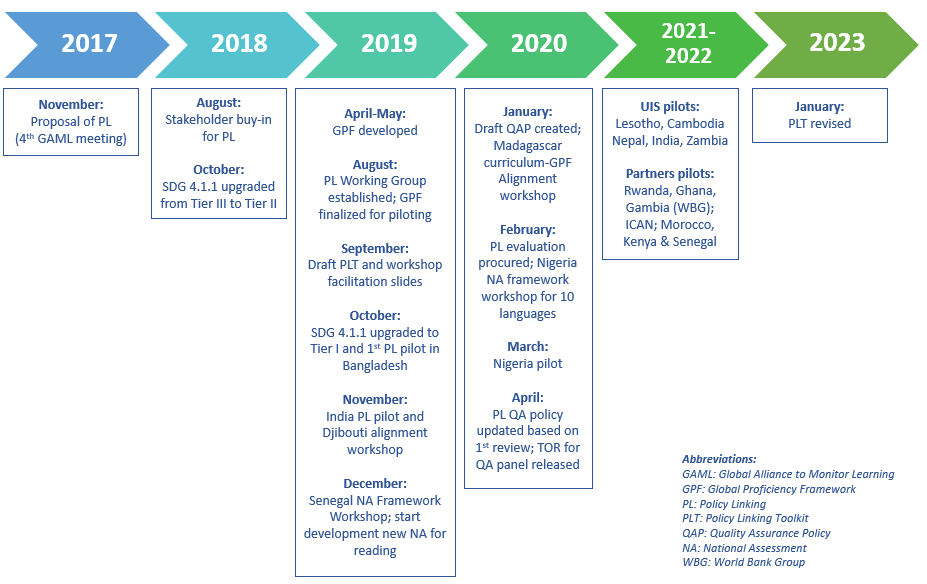
The Global Content Framework (GCF) defines, each for the domain of reading and mathematics, the content framework for the three points of measurement (grade 2 or 3, end of primary and end of lower secondary), and the minimum content that ensures comparability between assessments using global standards.
| Global Content Frameworks | |
 |
 |
| Reading | Mathematics |
 |
 |
| English Spanish French Tables |
English Spanish French Tables |
| The GPF is also available in other languages. Click here for more information. | |
 Minimum Proficiency Levels at the global scale have been mapped to assessment programmes from around the world.
Minimum Proficiency Levels at the global scale have been mapped to assessment programmes from around the world.
The Policy Linking Toolkit describes the Policy Linking methodology used for measuring global learning outcomes. The toolkit was initially developed in 2019 and revised in 2020 and 2023 following implementation of the Policy Linking methodology in a number of pilot countries. It is designed for project teams, more specifically workshop facilitators, and resource persons – i.e., government officials, assessment agency officers, donor representatives, and partners – who will be organizing, funding, and/or implementing the Policy Linking methodology in their country or region and it includes clear guidelines for implementation.
Discover the revised Policy Linking for Measuring Global Learning Outcomes Toolkit (English – Arabic) 2023
Download the Policy Linking workshop presentations (English – Arabic) 2023
Changes in the revised Policy Linking Toolkit:
- Six stages instead of seven
- Easier-to-navigate document including navigating guides by role (e. g. content facilitator)
- Preparing for workshop: activity planner, budgeting templates, roles and responsibilities, capacity building of local content facilitators
- Adding workflow to help panelists with the process
- Understanding advantages/disadvantages/requirements of different types of workshops (in-person, remote and hybrid)
- Translating GPF/other documents and providing additional support to successful implementation of workshops
Updated stages of Policy Linking (2022)

| Pilot Countries of UIS | Year | Grades | Language | Reports |
| Bangladesh | 2019 | Grade 3 and 5 | Bangla | View report |
| India | 2019 | Grade 3 and 5 | English | View report |
| Cambodia | 2021 | Grade 6 | Khmer | View report |
| India | 2021 | Grade 8 | Hindi | View report |
| Lesotho | 2021 | Grade 6 | English | View report |
| Nepal | 2021 | Grade 5 | Nepali | |
| Zambia | 2022 | Grade 5 | English | View report |
| CITO PL evaluation report | 2022 | View report |
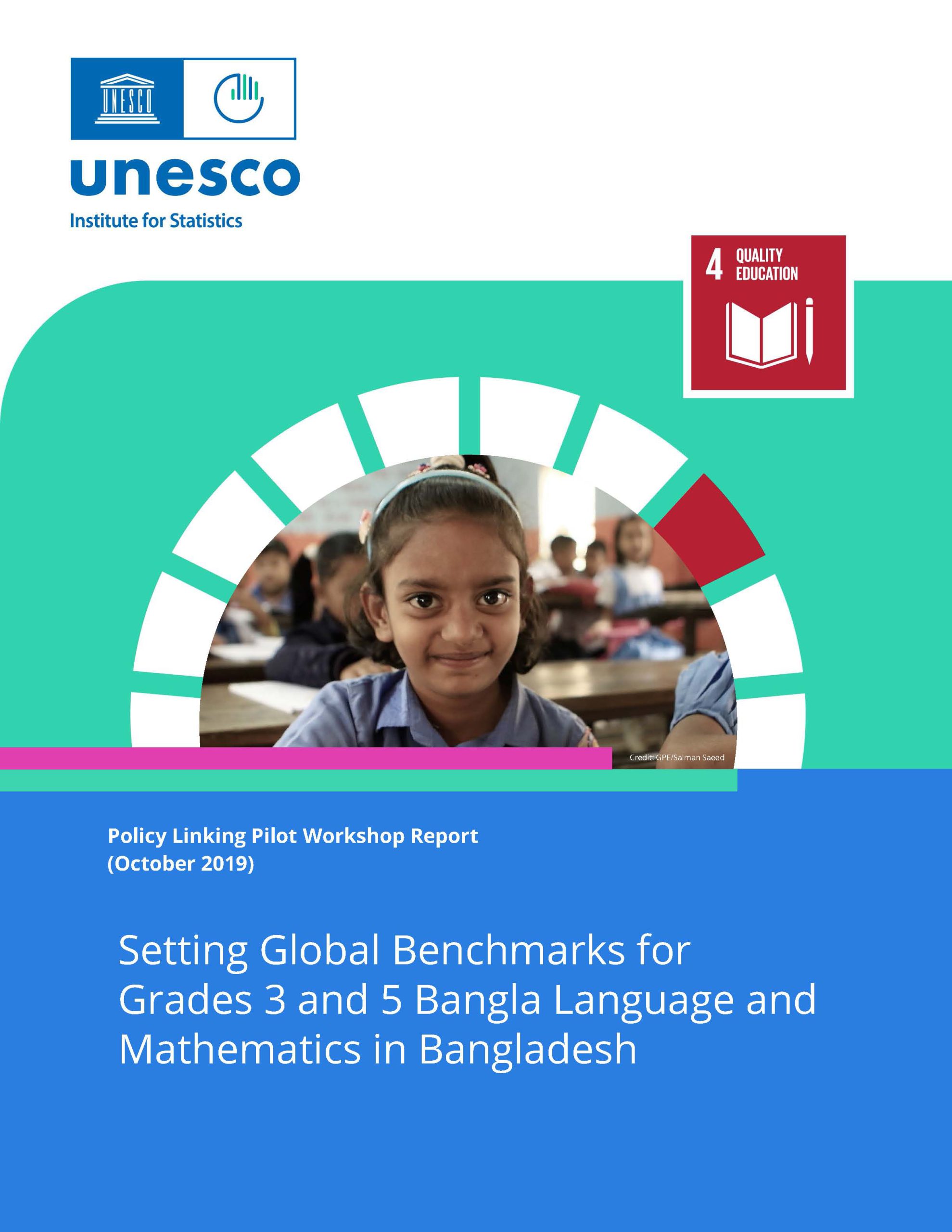
|
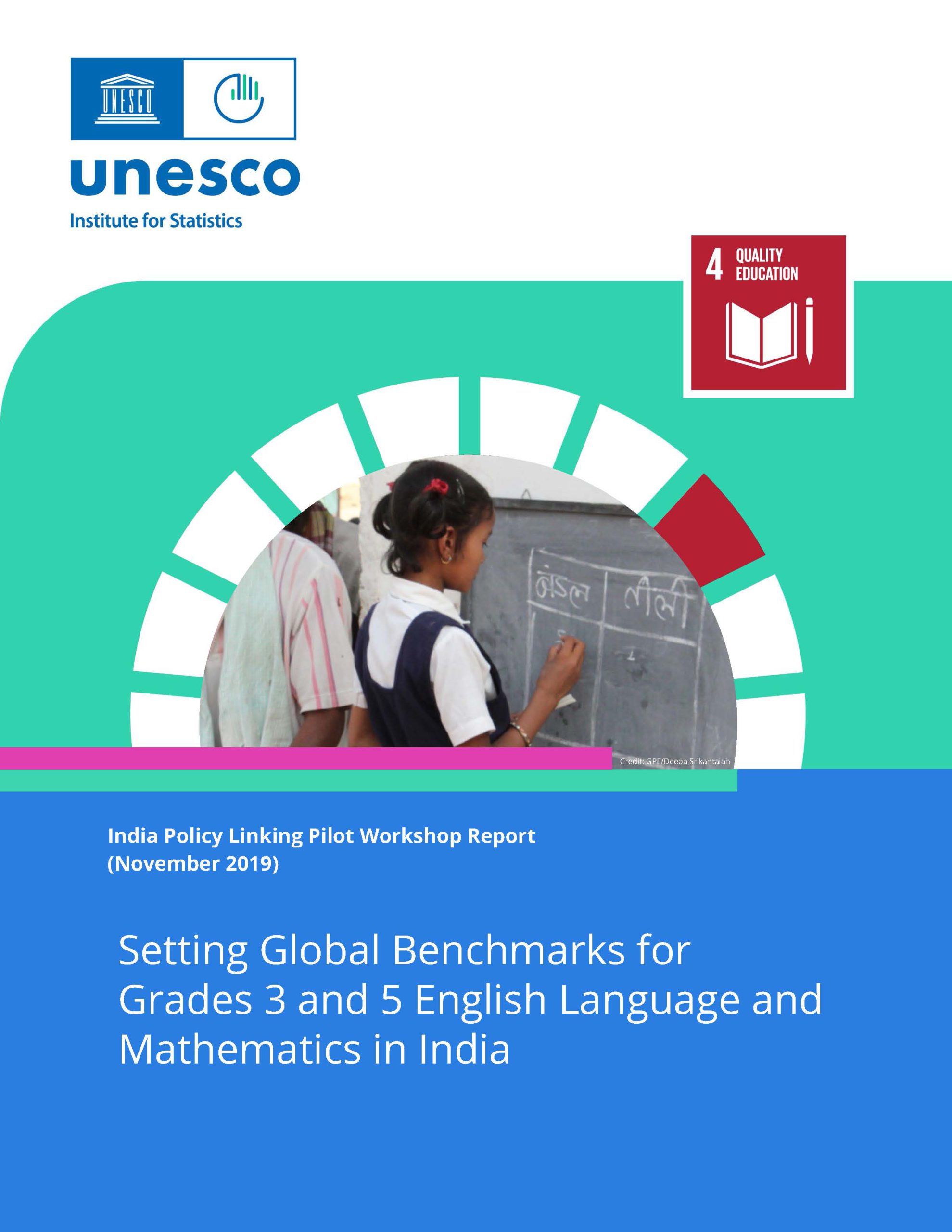
|
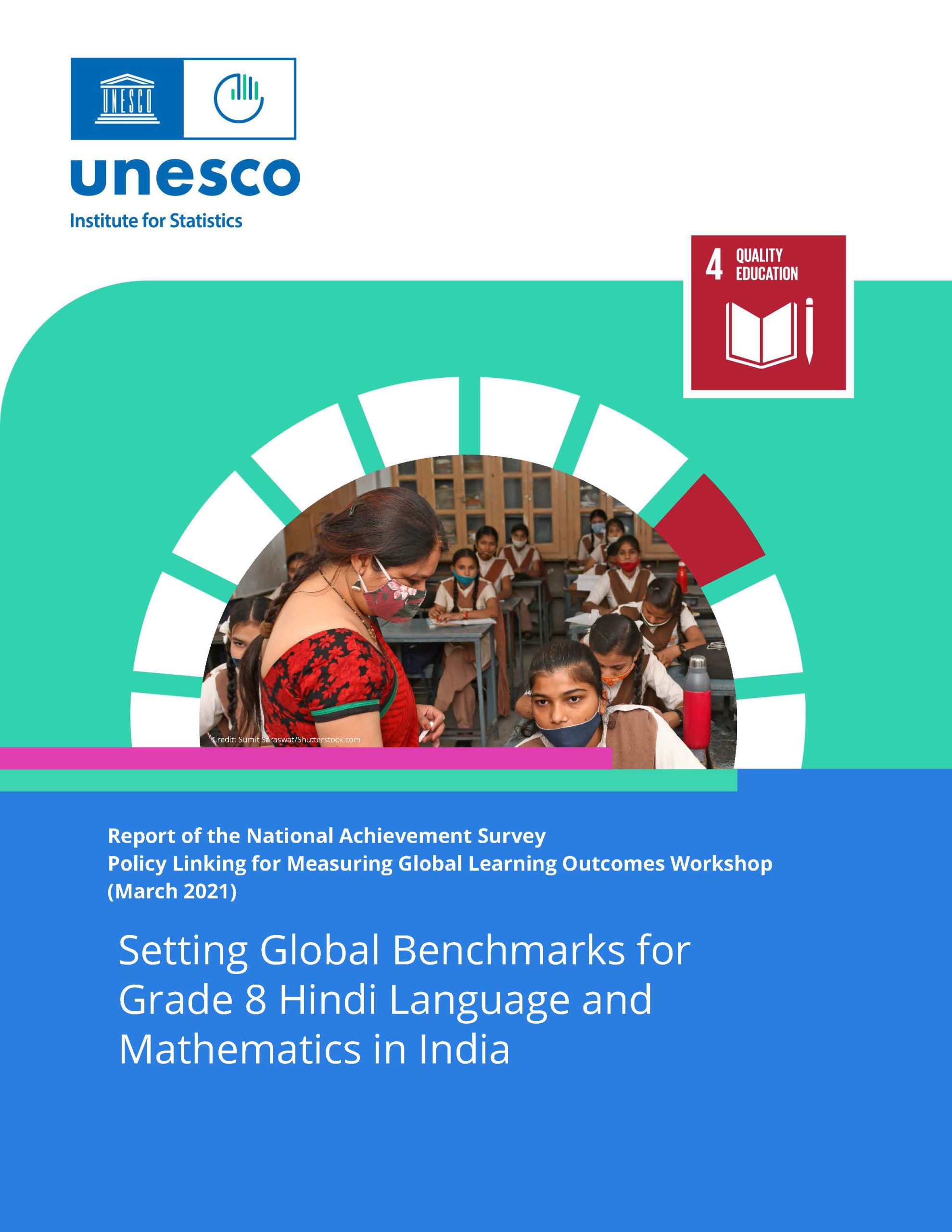
|
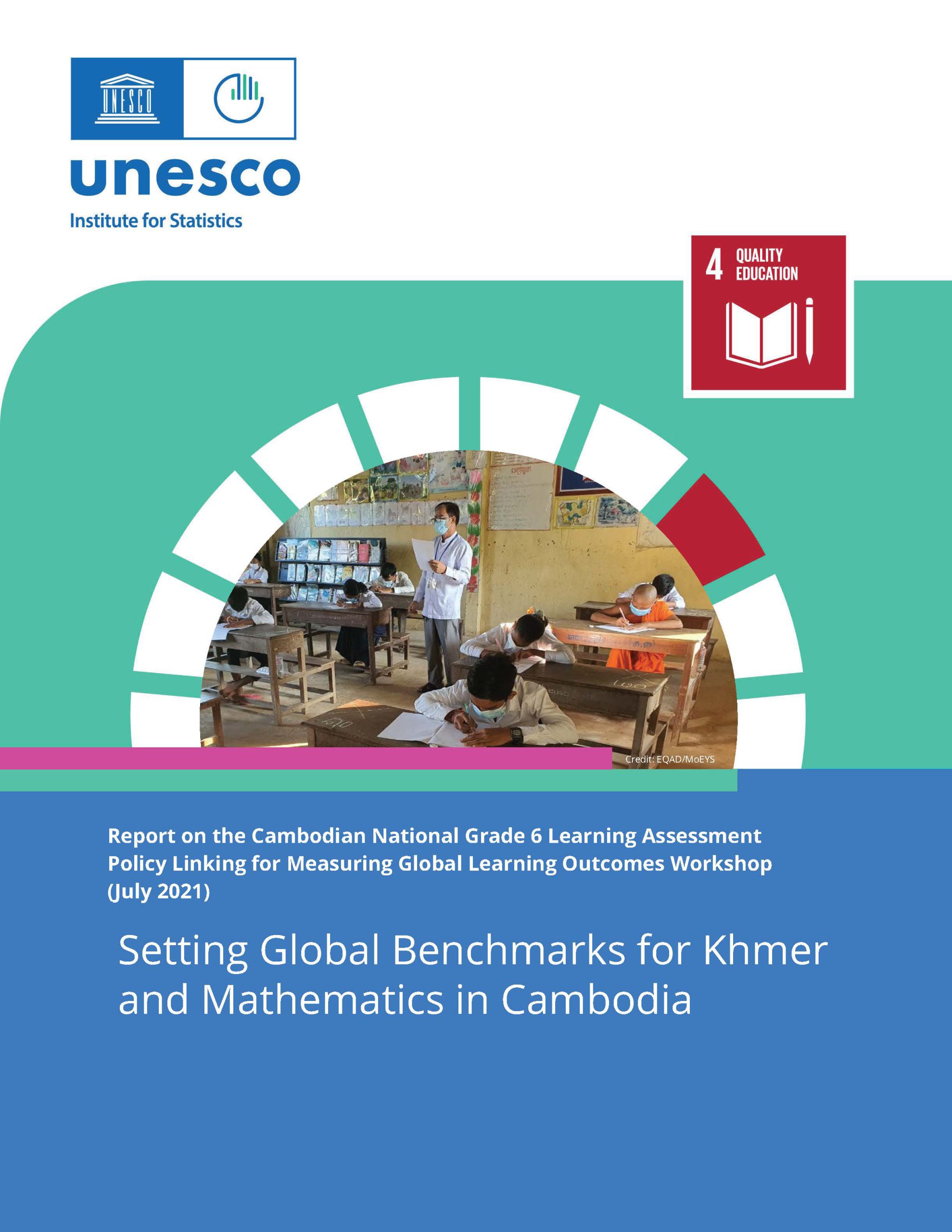
|
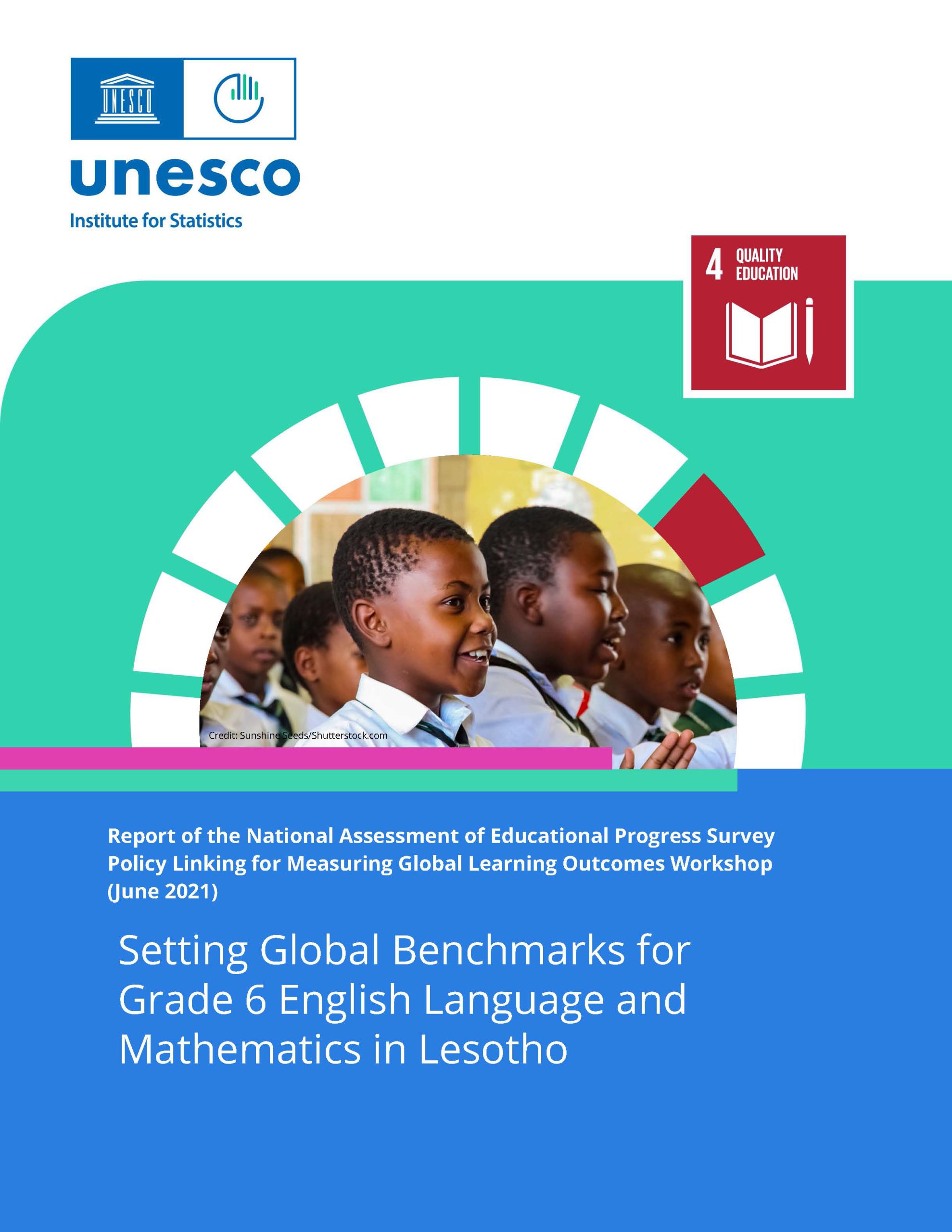
|
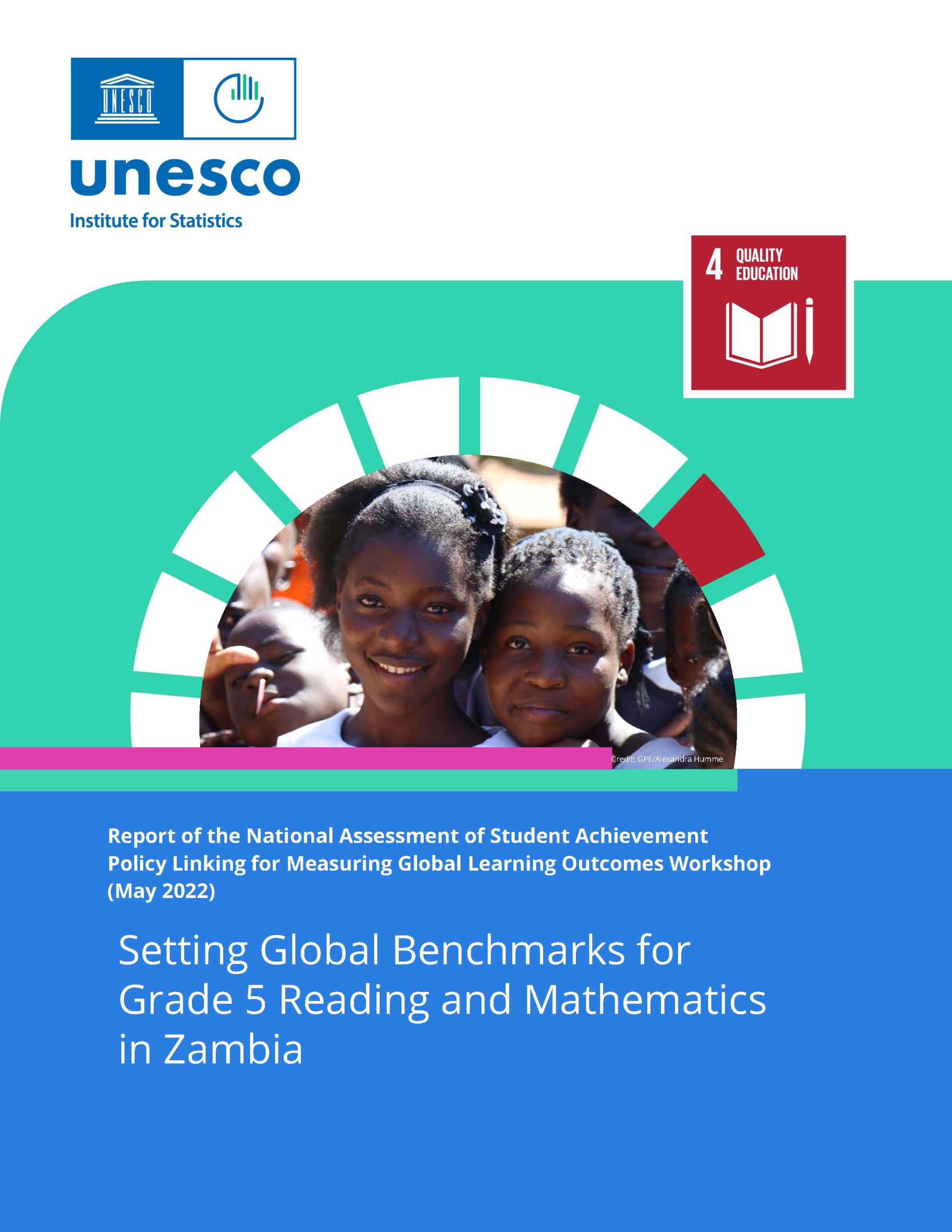
|

|
- USAID: Nigeria (2020), Morocco and Djibouti; forthcoming Kenya and Senegal.
- WBG: Ghana and Gambia
- USAID/FCDO/UIS: ICAN/PAL Network
- Bill & Melinda Gates Foundation
- U.K. Foreign, Commonwealth and Development Office (FCDO)
- U.S. Agency for International Development (USAID)
- UNESCO Institute for Statistics (UIS)
- World Bank Group (WBG)
- Australian Council for Educational Research (ACER)
- CITO
- Global Reading Network (GRN)
- International Common Assessment for Numeracy (ICAN)
- Ministries of Education and/or the specialized agency or department for administering national learning assessments in Bangladesh, Cambodia, Djibouti, Gambia, Ghana, India, Kenya, Lesotho, Morocco, Nepal, Nigeria, Rwanda, and Senegal
- MSI
- National Foundation for Educational Research (NFER)
- People’s Action for Learning (PAL) Network
- The Education Partnership (TEP Centre)
- Zizi Afrique
■ Global Alliance to Monitor Learning (GAML) meetings:
■ Social responsibility within changing contexts. Comparative and International Education Society (CIES) 2021. (65th Annual Meeting)
Session 205. What is Global Minimum Proficiency - 26 April 2021
What is Global Minimum Proficiency?, UNESCO Institute for Statistics
Policy Linking for Measuring Global Learning Outcomes: Using the GPF in a cross-national remote benchmarking workshop , Mr Colin Watson, UK Department for Education (UKaid)
Challenges and Benefits of Translating Global Standards to Local Contexts, Ms Norma Evans, Evans and Associates Educational Consulting Limited
Policy Linking - Redesigning National Assessments for SDG Reporting: The Senegal Experience, Mr Badara Sarr, Education and Learning Adviser
■ Improving education for a more equitable world. Comparative and International Education Society (CIES) 2023. (67th Annual Meeting)
■ Educationlinks:
https://www.edu-links.org/resources/policy-linking-measuring-global-learning-outcomes
https://www.edu-links.org/resources/global-proficiency-framework-reading-and-mathematics
 |
 |
 |